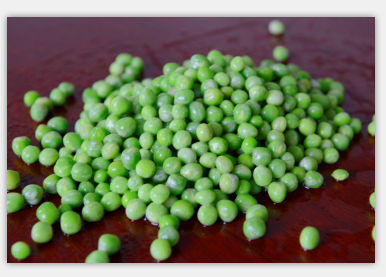Spring to early summer is the peak season for females to give birth. The most probable stage of the problem of dams (cattle, horses, donkeys, pigs, sheep, etc.) is before and after childbirth. During this period of time, if the rearing and care of the dams is poor, the deaths of the litter and dams will often be caused, causing serious economic losses. The physiological characteristics and feeding techniques before and after maternal delivery are described as follows:
First, the physiological characteristics of the mother and her husband before and after childbirth
Before maternity, the volume of the fetus grows quickly. From the outside, the abdominal circumference of the female animal increases significantly. At this time, the fetus continues to squeeze and oppress the gastrointestinal tract in the abdominal cavity of the mother so that the range of the gastrointestinal tract is continuously reduced. Therefore, before maternity, it is prone to indigestion, diarrhea, or constipation. If a large amount of roughage is fed to the dam at this stage, it will hinder the fetal activity (ie, fetal movement) and the fetus's blood circulation and affect the fetus. The development may even lead to malposition or dystocia. After labor, the mother animals consume a lot of physical strength, while the ovary, uterine function and position of the female animals are not yet normal, and the digestive function is still weak.
二ã€Feeding before and after mothers and mothers give birth
According to the physiological characteristics of the above-mentioned mothers and females before and after their delivery, in order to prevent indigestion and dystocia before the onset of maternal labour, and prevent the postpartum mothers from prematurely mass-producing milk and dysentery of young animals, the amount of fodder fed before and after the confinement shall be consciously controlled, and care shall be taken. Feed easily digested feed. In the pig industry, the sow is rapidly growing in the mother's body during the later period of pregnancy and requires a large amount of nutrients. Therefore, it is necessary to implement multiple meals and less feeding, gradually reduce the amount of coarse feed, reduce the volume of feed, and appropriately increase the concentrate according to the sow's lyrical condition. In this way, the gastrointestinal tract of the sow can be prevented from being oversized and pressing the fetus, resulting in dystocia or stillbirth. At the same time can also make the fetus get enough nutrition. Three to four days before childbirth, feed intake should be reduced according to the diet of the sow, feeds that are easily digestible (such as bran, etc.), so that the sows are able to have smooth stools, facilitate childbirth, and prevent postpartum constipation of sows. Or too thick milk causes diarrhea in piglets. After the sow is delivered, the umbilical cord and the dressing should be removed immediately to prevent the sow from swallowing the placenta, causing indigestion, affecting milk production or causing bad habits of the baby. The second day after sow, the sows can be fed digestible feed. After the third or fourth day, ordinary feeds can be gradually fed.
Other dams generally need to reduce the amount of feed before 10 to 15 days before delivery, especially to reduce the amount of rough feed, but mainly feed easily digestible feed. Do not add material immediately within 7 to 10 days after delivery. Gradual feeding methods should be adopted to gradually return to normal dietary levels, and feeds with high nutritional value and easy to digest should be selected to increase feed utilization.
Before and after the mothers and females deliveries, the material reduction and feeding should be flexibly controlled according to the specific circumstances. For the poorly digested and well-digested females, they may not reduce their raw materials, while those who have good antenatal plague, breast expansion, and poor appetite should reduce their raw materials early. As for postpartum feeding, it should also be based on the female's appetite, digestion, and milk production.
Green Peas, According to the color of their cotyledons, Peas are divided into two types: green skin, green peas, and
green skin yellow peas. Green peas are green-green peas. Peas in northeast China are the most famous. It is one of China's
important food crops. It has a history of 5,000 years of cultivation. Our company can provide two different frozen peas to meet the needs of different people.
The effect and effect of green peas
Daily
green peas can provide catechins and epicatechins as two kinds of
flavonoid antioxidants. When people get older, there will be more and
more free radicals in the body. Free radicals and aging are positively
related. Nutrition in green beans can resist. Free radical-induced diseases, delaying the speed of body aging, as well as anti-inflammatory, spectral antibacterial effects.
Kidneys of green peas
[Appropriate
population] Green peas are suitable for menopausal women, diabetes and
cardiovascular patients, and mental workers and dieters are also very
suitable for eating green Peas. These people can eat green beans to
improve disease and physical condition.
[Contrained
people] People with severe liver disease, peptic ulcer,
arteriosclerosis, kidney disease, gout, low iodine and other diseases
are not to eat green peas, so as not to aggravate the condition.

Frozen Green Peas,Green Peas Ifq,Wholesale Frozen Green Peas,Chinese Style Green Peas,Bulk Frozen Vegetables
LETING JINTIAN FRUIT AND VEGETABEL CO., LTD. , http://www.chinafrozenvegetable.com